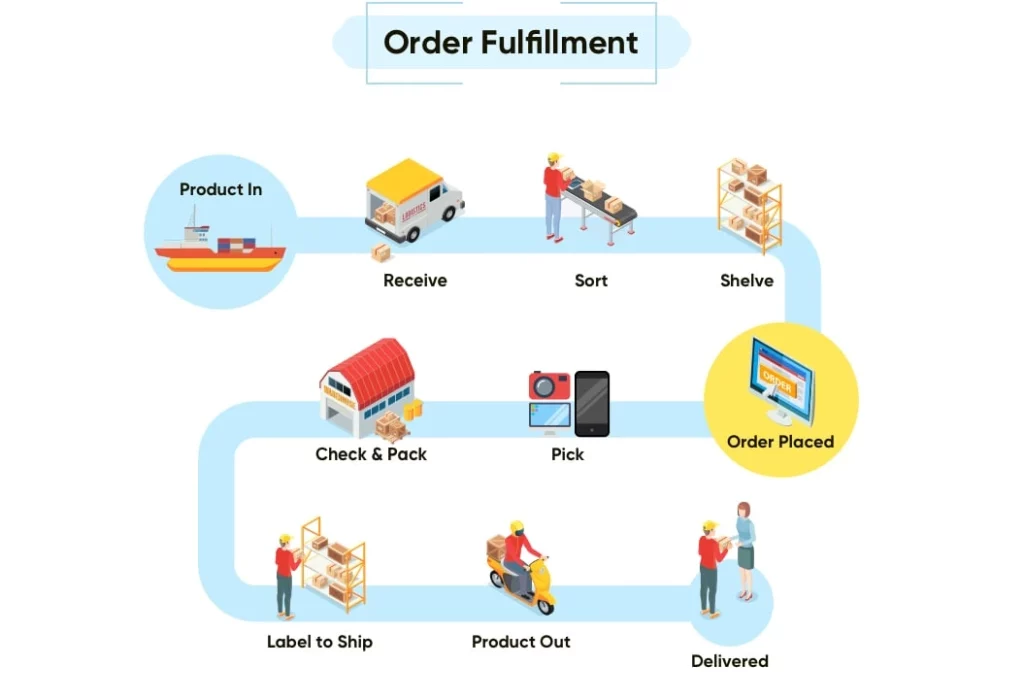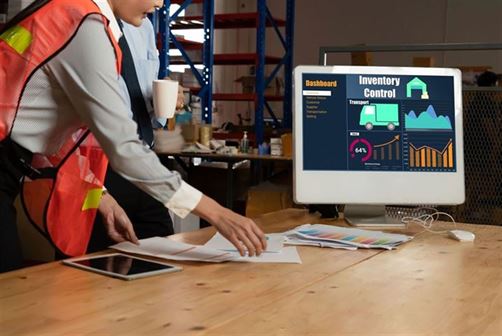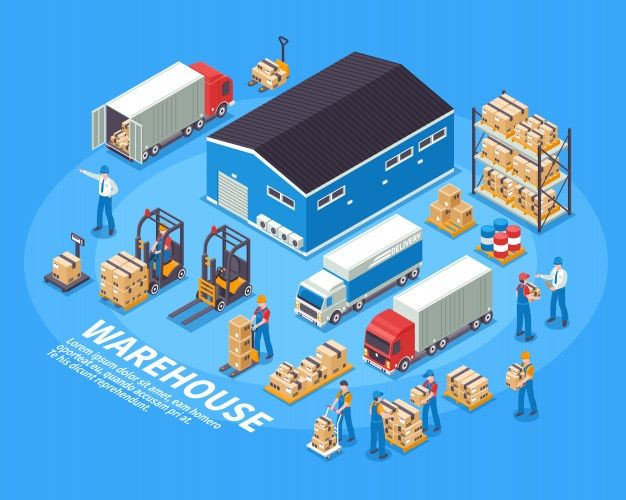Effortlessly Manage Your Orders and Streamline Fulfillment Across All Channels with Our Omnichannel E-commerce Order Management .
Streamline your procurement process and simplify purchase management for enhanced efficiency and control
Effortlessly Manage Your Orders and Streamline Fulfillment Across All Channels with Our Omnichannel E-commerce Order Management Solution.
Centralized Supplier Communication Platform
A centralized platform for supplier communication is essential for reducing the risk of miscommunication and enhancing the speed and accuracy of interactions. This platform can serve as a single point of contact for all supplier-related communications, ensuring that all messages, documents, and updates are easily accessible and traceable. Key features might include:
Unified Messaging System: Integrates emails, instant messaging, and video calls into one interface.
Document Management: Central repository for contracts, invoices, and other critical documents.
Automated Notifications: Alerts for order updates, shipment tracking, and payment reminders.
Audit Trails: Logs of all communications for accountability and transparency.
User-Friendly Interface: Simplifies the ordering process with easy navigation and clear instructions.
Order Tracking: Real-time updates on order status, from placement to delivery.
Inventory Management: Integration with inventory systems to automatically update stock levels.
Error Reduction: Automated checks for order accuracy, reducing the likelihood of mistakes.
Shared Dashboards: Real-time visibility into supply chain metrics for both parties.
Collaborative Planning: Tools for joint forecasting and demand planning.
Issue Resolution: Platforms for tracking and resolving supply chain issues collaboratively.
Performance Metrics: Shared KPIs to monitor and improve supplier performance.
Vendor Database: Comprehensive profiles for each vendor, including contact details, contract terms, and performance history.
Data Validation: Automated checks to ensure data accuracy and consistency.
Reporting Tools: Advanced analytics for monitoring vendor performance and identifying trends.
Compliance Management: Tools to ensure vendors meet regulatory and contractual obligation.

Requisition Document in Purchase Management
Detailed Item Descriptions: Clear specifications of the items needed, including any relevant details such as size, color, or model number.
Quantity Requirements: Exact numbers of each item required to avoid over or under-ordering.
Delivery Dates: Specific dates by which the goods or services are needed to ensure timely procurement and avoid disruptions in operations.
Approval Workflow: A structured process for obtaining necessary approvals from relevant departments or personnel before proceeding with the purchase.
Real-Time Order Status: Instant updates on the status of each purchase order, from creation to delivery.
Inventory Integration: Seamless integration with inventory management systems to automatically update stock levels as orders are placed and received.
Historical Data Access: Easy access to past purchase orders for reference and analysis.
Alerts and Notifications: Automated alerts for order delays, stock shortages, and other critical issues.
Order Creation: Automated generation of purchase orders based on requisition documents and inventory levels.
Approval Routing: Automatic routing of purchase orders to the appropriate personnel for approval.
Vendor Communication: Direct electronic transmission of purchase orders to vendors, reducing the risk of miscommunication.
Error Reduction: Built-in checks and validations to ensure order accuracy and completeness.
Data Analysis: Analyzing purchasing data to identify patterns and opportunities for consolidation.
Bulk Ordering: Combining multiple smaller orders into larger ones to take advantage of bulk purchasing discounts.
Vendor Negotiations: Leveraging consolidated order volumes to negotiate more favorable terms and pricing with vendors.
Cost Tracking: Monitoring cost savings achieved through consolidation efforts and adjusting strategies

Effortless Purchase Order Creation

Creating purchase orders easily and quickly with just a few clicks eliminates the need for manual data entry and significantly reduces the risk of errors.
User-Friendly Interface: An intuitive platform that allows users to generate purchase orders with minimal effort.
Template-Based Orders: Predefined templates for common orders to speed up the creation process.
Automated Data Entry: Integration with existing systems to automatically populate order details, reducing manual input.
Error Prevention: Built-in validation checks to ensure all required fields are completed accurately.
Real-Time Status Updates: Instant notifications on order progress, from placement to delivery.
Dashboard Views: Centralized dashboards displaying the status of all active orders.
Issue Alerts: Automated alerts for potential delays or issues, allowing for proactive management.
Historical Tracking: Access to past order histories for analysis and reporting.
Approval Workflows: Automated routing of purchase orders through predefined approval chains.
Policy Enforcement: Rules to ensure all orders comply with organizational procurement policies.
Spending Limits: Controls to prevent orders from exceeding budgetary constraints.
Audit Trails: Comprehensive logs of all actions taken on purchase orders for accountability.
Clear Contracts: Detailed agreements outlining delivery schedules, quantities, and pricing.
System Integration: Seamless integration with vendors’ systems for real-time data exchange.
Collaborative Platforms: Shared platforms for joint planning and issue resolution.
Performance Metrics: Regular reviews of vendor performance against agreed-upon metrics.
API Integration: Connecting systems via APIs to enable real-time data exchange.
Inventory Sync: Automatic updates to inventory levels based on vendor data.
Dynamic Pricing: Real-time adjustments to pricing based on vendor updates.
Availability Alerts: Notifications of changes in product availability to prevent stockouts or overstocking.
Real-Time Order Tracking
Real-time order tracking from purchase order creation to delivery ensures that goods or services are delivered on time and allows for the resolution of any issues that may arise during procurement.
Order Creation: Immediate logging of purchase orders into the tracking system.
Status Updates: Continuous updates on the status of the order, including confirmation, processing, shipping, and delivery stages.
Issue Resolution: Automated alerts for any delays or issues, enabling quick resolution to keep the procurement process on track.
Delivery Confirmation: Notifications upon successful delivery, ensuring that the procurement cycle is complete.
Carrier Data Sync: Real-time synchronization with shipping carriers to receive up-to-date tracking information.
Delivery Estimates: Accurate delivery time estimates based on carrier data.
Tracking Links: Direct links to carrier tracking systems for detailed shipment status.
Exception Handling: Alerts for any shipping exceptions, such as delays or reroutes, allowing for proactive management.
Performance Monitoring: Continuous monitoring of delivery performance to identify bottlenecks and delays.
Supplier Coordination: Enhanced communication with suppliers to ensure timely dispatch of goods.
Logistics Optimization: Analyzing logistics data to optimize delivery routes and schedules.
Contingency Planning: Developing contingency plans to address potential disruptions in the supply chain.
Real-Time Inventory Updates: Continuous updates to inventory levels as orders are placed and received.
Demand Forecasting: Using historical data and trends to predict future inventory needs.
Stock Alerts: Automated alerts for low stock levels, prompting timely restocking.
Inventory Reports: Detailed reports on inventory status, turnover rates, and stock levels to support decision-making.

Accurate Inventory Forecasting

Accurate forecasting in inventory management is crucial for predicting future demand and adjusting purchasing strategies accordingly. This helps reduce the risk of overstocking or understocking, ensuring that inventory levels are optimized. Key components include:
Demand Analysis: Utilizing historical sales data, market trends, and seasonal patterns to predict future demand.
Advanced Analytics: Implementing machine learning algorithms and predictive analytics to enhance forecasting accuracy.
Scenario Planning: Creating various demand scenarios to prepare for different market conditions.
Continuous Monitoring: Regularly updating forecasts based on real-time data and market changes.
Just-In-Time (JIT) Inventory: Ordering inventory just in time for production or sales to reduce holding costs.
Safety Stock: Maintaining a buffer stock to protect against unexpected demand spikes or supply chain disruptions.
Reorder Points: Setting precise reorder points based on lead times and demand variability.
Inventory Turnover: Monitoring inventory turnover rates to identify slow-moving items and adjust stock levels accordingly.
Unified Systems: Connecting inventory and purchase management systems to ensure data consistency and real-time updates.
Automated Replenishment: Automatically generating purchase orders based on inventory levels and demand forecasts.
Error Reduction: Minimizing manual data entry and associated errors through system integration.
Process Optimization: Streamlining workflows to reduce delays and improve overall efficiency.
Real-Time Tracking: Continuous monitoring of inventory levels and order statuses.
Order Visibility: Detailed tracking of ordered products, including expected arrival dates and quantities.
Stock Alerts: Automated notifications for low stock levels, pending orders, and potential stockouts.
Cost Management: Analyzing holding costs and identifying opportunities to reduce excess inventory.
Centralized Purchase Management System
A centralized purchase management system provides a comprehensive view of spending, enforces business rules, prevents overspending, and ensures purchases are within budget. This system offers several key benefits:
Unified Dashboard: A single interface displaying all purchase activities, budgets, and expenditures.
Spending Visibility: Real-time tracking of all purchases, allowing for immediate identification of spending trends and potential issues.
Budget Compliance: Automated checks to ensure that all purchases are within the allocated budget.
Audit Trails: Detailed logs of all transactions for accountability and transparency.
Spending Limits: Predefined limits for different departments, categories, or individual users to control expenditures.
Approval Workflows: Automated routing of purchase requests through a hierarchy of approvals based on the amount and type of purchase.
Policy Enforcement: Rules to ensure all purchases adhere to company policies and regulatory requirements.
Fraud Prevention: Mechanisms to detect and prevent unauthorized or suspicious transactions.
Budget Allocation: Assigning specific budgets to departments or projects to ensure controlled spending.
Expense Monitoring: Continuous tracking of expenses against the budget to identify and address any variances.
Cost Analysis: Regular analysis of spending patterns to identify areas for cost savings.
Financial Reporting: Detailed reports on budget performance to support financial planning and decision-making.
Data-Driven Insights: Leveraging detailed spending data to identify trends and opportunities for optimization.
Strategic Planning: Using budget reports to inform strategic planning and resource allocation.
Investment Decisions: Evaluating the financial impact of potential investments based on current spending patterns.
Performance Metrics: Monitoring key performance indicators (KPIs) related to procurement and budget management.

Grow your report
Integration with Vendor Systems

Integrating with vendor systems and having the ability to access all vendor prices in one place helps businesses make informed purchasing decisions and negotiate better pricing with vendors. This integration offers several advantages:
Real-Time Data Access: Seamless integration with vendor systems provides real-time access to pricing, availability, and other critical data.
Comprehensive Price Comparison: A centralized platform allows businesses to compare prices from multiple vendors simultaneously, ensuring they choose the most cost-effective option.
Automated Updates: Automatic synchronization with vendor systems ensures that pricing information is always current, reducing the risk of outdated data.
Enhanced Decision-Making: Access to comprehensive and up-to-date vendor information supports more informed purchasing decisions.
Centralized vendor pricing allows businesses to compare prices across vendors and choose the best option, reducing the risk of overpaying for goods or services.
Price Transparency: A single platform displaying all vendor prices provides complete transparency, making it easier to identify the best deals.
Cost Savings: By comparing prices, businesses can avoid overpaying and identify opportunities for cost savings.
Simplified Management: Centralized pricing information simplifies the management of vendor relationships and pricing negotiations.
Historical Data: Access to historical pricing data helps businesses understand pricing trends and make strategic purchasing decisions.
Automated Price Updates: Integration with vendor systems ensures that pricing information is automatically updated in real-time.
Manual Adjustments: The ability to manually update prices when necessary, ensuring accuracy and flexibility.
Notification Alerts: Automated alerts for price changes, allowing businesses to respond quickly to market fluctuations.
Data Accuracy: Ensuring that all pricing data is accurate and up-to-date reduces the risk of errors in purchasing decisions.
Leverage Bulk Purchasing: Consolidating orders to negotiate bulk discounts and better terms with vendors.
Competitive Bidding: Using price comparisons to encourage competitive bidding among vendors, driving down costs.
Strategic Partnerships: Building stronger relationships with key vendors by demonstrating a clear understanding of market prices and trends.
Informed Negotiations: Access to comprehensive pricing data empowers businesses to negotiate from a position of strength, securing more favorable terms.
Real-Time Synchronization with Vendors
Real-time synchronization of product availability, pricing, and promotions with vendors allows businesses to monitor inventory levels, track order status, and adjust purchasing decisions based on up-to-date information.
Product Availability: Continuous updates on stock levels from vendors, ensuring accurate information on product availability.
Pricing Updates: Real-time adjustments to pricing based on vendor data, including promotions and discounts.
Promotion Tracking: Monitoring vendor promotions to take advantage of special offers and discounts.
Order Status: Real-time tracking of order progress, from placement to delivery, ensuring timely updates and transparency.
Accurate Inventory Levels:Accurate inventory levels with real-time synchronization enable businesses to make informed purchasing decisions based on up-to-date information about stock availability. This helps avoid stockouts and overstocking, optimizing inventory management. Key benefits include:
Stock Visibility: Real-time visibility into current inventory levels, allowing for precise stock management.
Demand Matching: Aligning inventory levels with actual demand to prevent excess stock or shortages.
Automated Replenishment: Triggering automatic reorder points based on real-time inventory data.
Inventory Optimization: Balancing inventory levels to minimize holding costs while ensuring product availability.
Order Processing: Immediate processing of orders as they are received, reducing lead times.
Vendor Coordination: Seamless communication with vendors to ensure timely dispatch and delivery of orders.
Customer Updates: Providing customers with real-time updates on order status, enhancing transparency and trust.
Fulfillment Efficiency: Streamlining the fulfillment process to reduce delays and improve overall efficient.
Error Reduction: Minimizing manual data entry errors through automated data synchronization.
Timely Updates: Ensuring that all systems are updated in real-time, reducing the risk of outdated information.
Process Automation: Automating routine tasks to reduce the need for manual intervention and associated delays.
Data Consistency: Maintaining consistent and accurate data across all systems, improving decision-making and operational efficiency.

Automated Supplier Communication

Automated communication with suppliers ensures accurate order processing and delivery by including automated order confirmation, delivery tracking, and invoice processing.
Order Confirmation: Automatic generation and sending of order confirmations to suppliers, ensuring that orders are acknowledged promptly.
Delivery Tracking: Real-time tracking of shipments, providing updates on the status and location of deliveries.
Invoice Processing: Automated processing of invoices, matching them with purchase orders and delivery receipts to ensure accuracy and expedite payments.
Error Reduction: Minimizing manual data entry errors through automated workflows.
Faster Communication:Facilitating faster and more efficient communication with suppliers reduces the need for manual intervention and speeds up the purchasing process
Instant Messaging: Real-time messaging platforms for immediate communication with suppliers.
Automated Notifications: Alerts and notifications for order status changes, delivery updates, and other critical information.
Integrated Systems: Seamless integration of communication tools with procurement systems to streamline interactions.
Response Time: Reducing response times by automating routine communications and follow-ups.
Reduced Errors and Miscommunications:Automated supplier communication addresses errors and miscommunications resulting from manual processes, leading to better accuracy and fewer delays in purchase management.
Standardized Templates: Using standardized communication templates to ensure consistency and clarity.
Automated Workflows: Implementing automated workflows for order processing, reducing the risk of human error.
Data Validation: Automated checks to validate data accuracy before sending communications.
Audit Trails: Maintaining detailed logs of all communications for accountability and error tracking.
Enhanced Visibility:Enhanced visibility into the status of orders, shipments, and other important information helps businesses stay up-to-date on procurement activities.
Centralized Dashboard: A unified dashboard displaying real-time updates on order status, shipment tracking, and inventory levels.
Reporting Tools: Advanced reporting tools to generate detailed reports on procurement activities and performance metrics.
Alerts and Notifications: Automated alerts for critical updates, such as delays or stockouts.
Historical Data Access: Easy access to historical data for analysis and decision-making.
